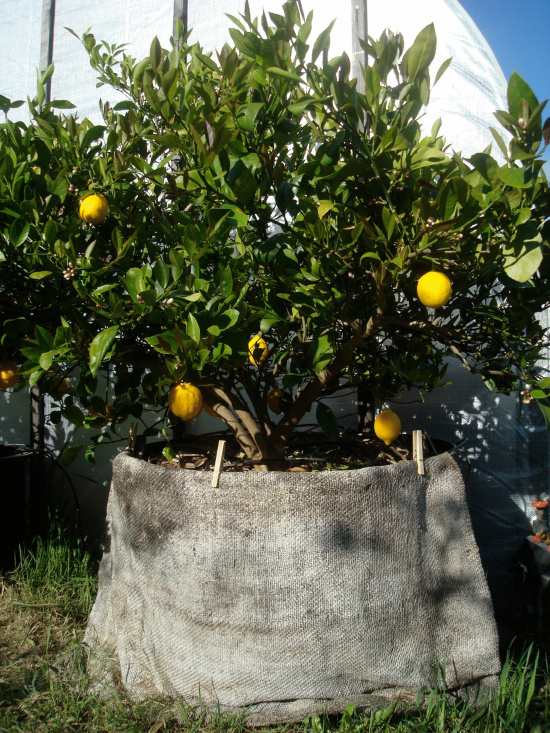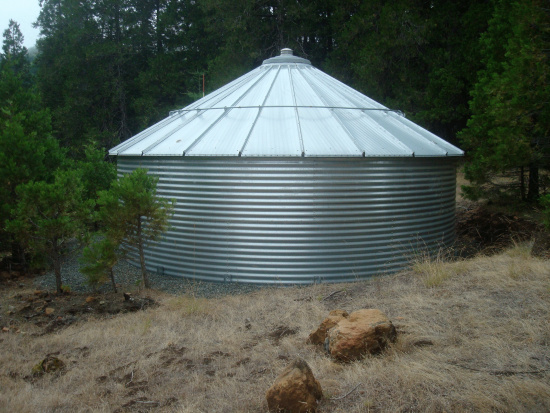
Marijuana and tomatoes in a heavily mulched organic garden.
UPDATE: Audio for the symposium can be found here. Story on Free Speech Radio can be found here at around the 1:40 mark.
The Humboldt Institute for Interdisciplinary Marijuana Research (HIIMR) held a symposium on marijuana and the environment over the weekend at Humboldt State University. Gary Hughes of EPIC, who moderated the opening forum, explained the goal of the event was to build a body of knowledge and create a shared dialog as well as a shared vocabulary to discuss cannabis and its effects on Humboldt. The hope, he said, is that the conversation would help the region develop a factual basis to deal clearly with the drawbacks while understanding the industry as a whole.
Most of the presentations at the event focused on the damage that some marijuana grows/growers are inflicting on the environment.
One of the speakers, Scott Bauer, staff environmental scientist with the California Department of Fish and Wildlife, said that marijuana activity in two of the watersheds that his team has been looking at, “exploded over the last six or seven years.” He said that over the last three years, in one area examined, the acreage under production doubled. In another area, the impact “more than doubled.” According to Bauer, his team estimated that 20 to 30 percent of the flow of one of the creeks he looked at is consumed by marijuana grows.
These watersheds though are not the worst. Bauer worries that with ever larger grows going in this year that other waterways are going to be impacted severely. He thinks, for instance, that portions of the Van Duzen may underground entirely this summer. He is worried about numbers of fish dying as their habitat is diminished.
Nonetheless, Hezekiah Allen expressed the views of several of those involved in the event when he said, “Pot is not the problem, the practices are.” Allen is executive director at the Mattole Restoration Council and has just announced that he is running for assemblyman on the North Coast. He is listed as a contact in a booklet called, “Best Management Practices — Northern California Farmers Guide,” which was distributed at the HIIMR event by attendees. The slender work is subtitled “A Prosperous Economy and a Healthy Environment — Seeking Balance and sustainability in Northern California’s ‘Green Rush.’”
According to the booklet, marijuana growers (or farmers of other forms of agriculture) can use this work as “a starting point in the process of identifying and creating viable solutions to the environmental problems our agricultural activities may be exacerbating … We believe that our proactive efforts will help prevent law enforcement and resource agencies from trying to solve these problems for us.”
The booklet quickly outlines the major impacts of marijuana growing and offers ways that everyone, grower or non-grower, can improve their environmental footprint. Water is the first area addressed. The booklet explains, “Anytime you are taking water from a seasonal or year-round waterway such as a creek, stream, or river you are creating a water diversion.” This “reduces streamflows and increases water temperatures [which] contributes to blue-green algae blooms in our rivers, affects the quality of water … and threatens the survival of endangered salmon, steelhead, and other aquatic life.”
Then it offers several steps that any outdoor gardener can take to reduce the impact of their water usage. Below are abbreviated versions of those steps.
- Inspect and fix water systems “all the collective drips add up!”
- Install float valves on tanks to keep water from overflowing.
- Install timers and drip irrigation.
- Water for 2-5 minutes 2-4 times per day (This keeps soil moist w/o wasting water or leaching nutrients.)
- Water when it is cool outside to reduce evaporation.
- Mulch and put drip lines and emitters under the mulch.
- Seed and mulch areas areas around your cultivated area that lack vegetation.
- Cover south and west sides of pots/containers with burlap to keep containers cool.

Burlap bag covering photo provided by Kyle Keegan
- Don’t overwater.
- Collect water in the wet season and store to use during the dry season.

Storage tank photo provided by Kyle Keegan
There are several other concerns addressed in the booklet. Presenters at the HIIMR symposium also examined a number of these issues. The Lost Coast Outpost will be addressing the different concerns and the solutions suggested in coming stories.
According to Allen, the booklet will soon be found at most of the local environmental organizations — the Mattole Restoration Council, Trees Foundation, EPIC, Friends of Eel River, etc. — but the hope is that soon it will be available at many local retailers, too.
———————-
The top photo is by Kym Kemp. Also, in the interest of full disclosure, note that Kym Kemp is a founding member of Grow It in the Sun, an organization that supported the printing of the booklet. Contributions towards printing can be donated to: Southern Humboldt Community Credit Union, “Grow It in the Sun”, Account #15031.
CLICK TO MANAGE